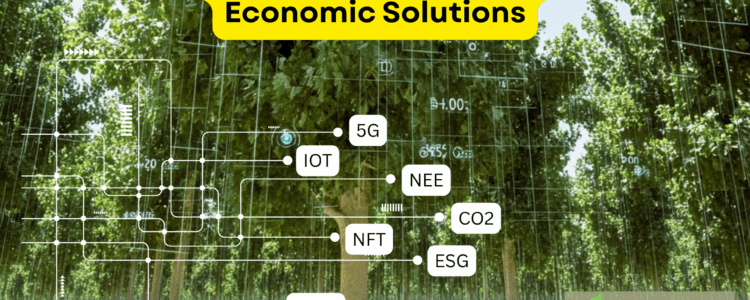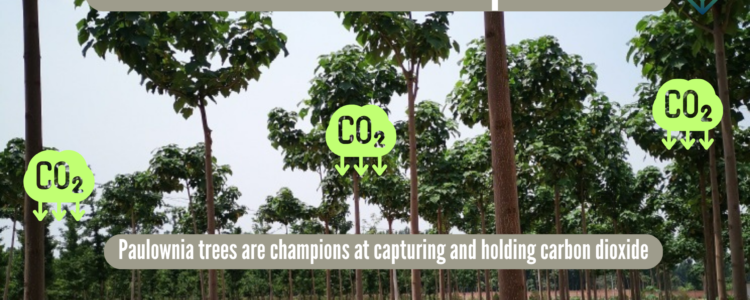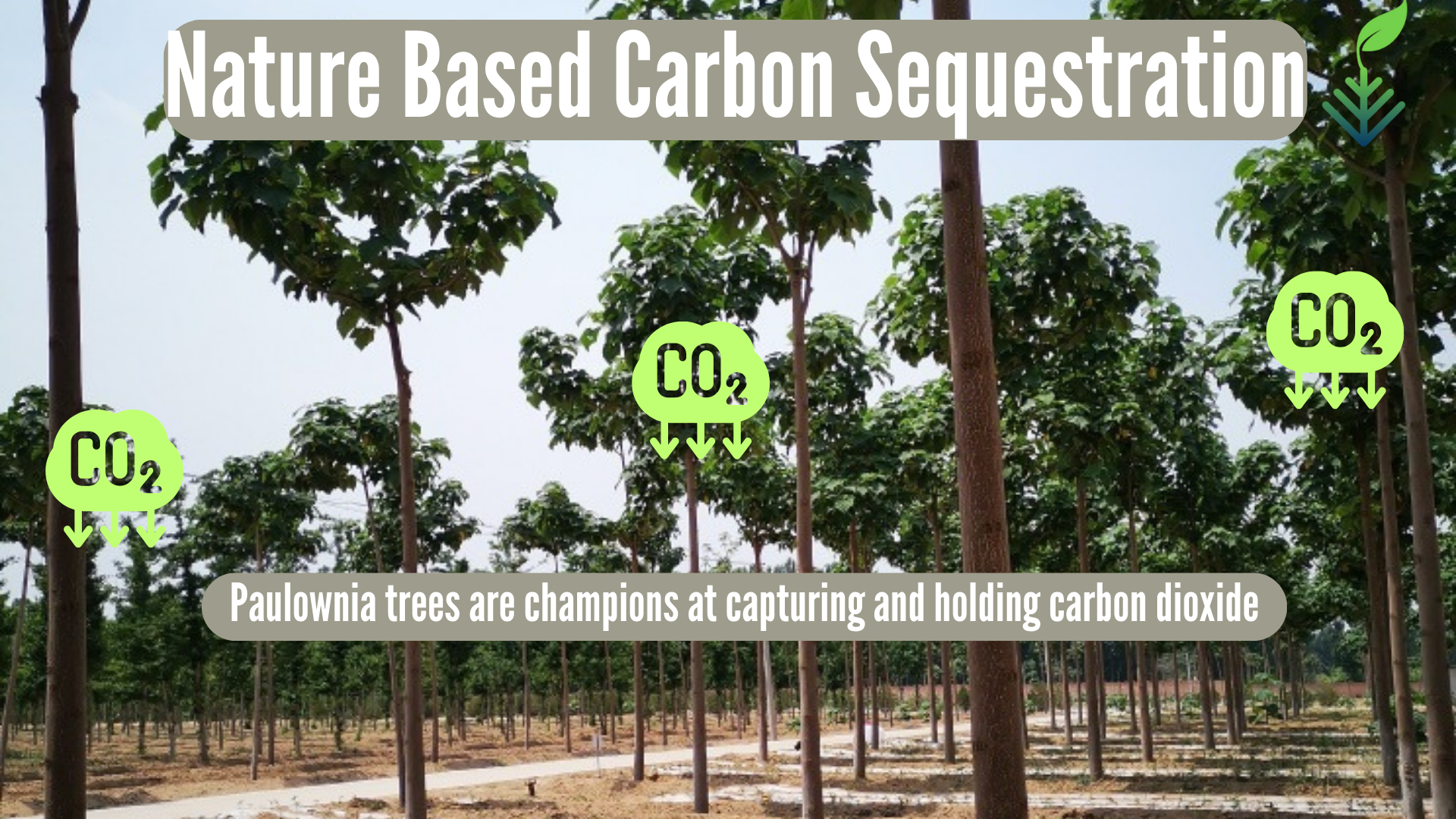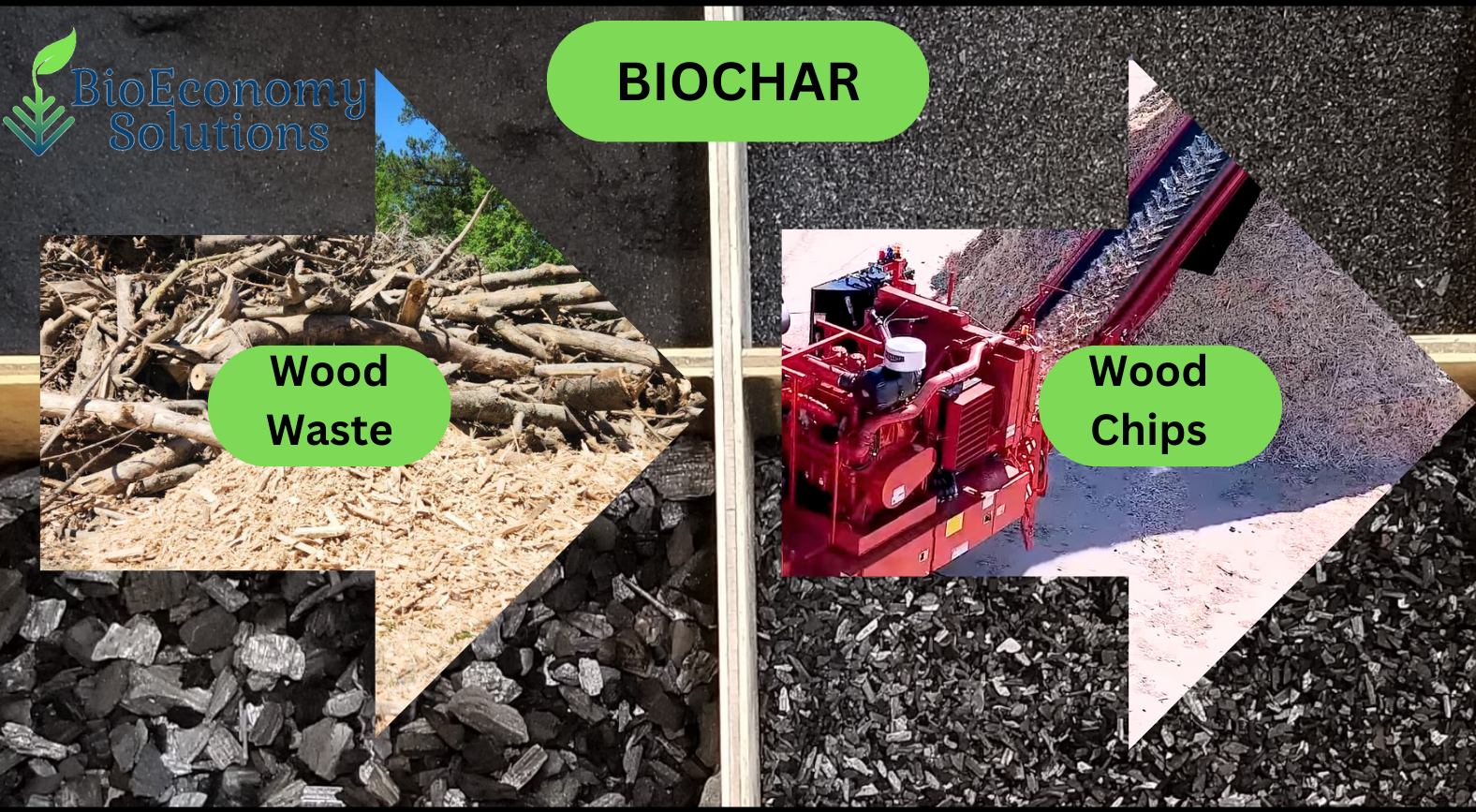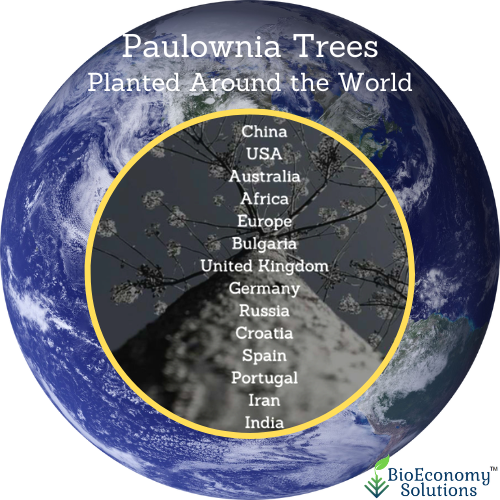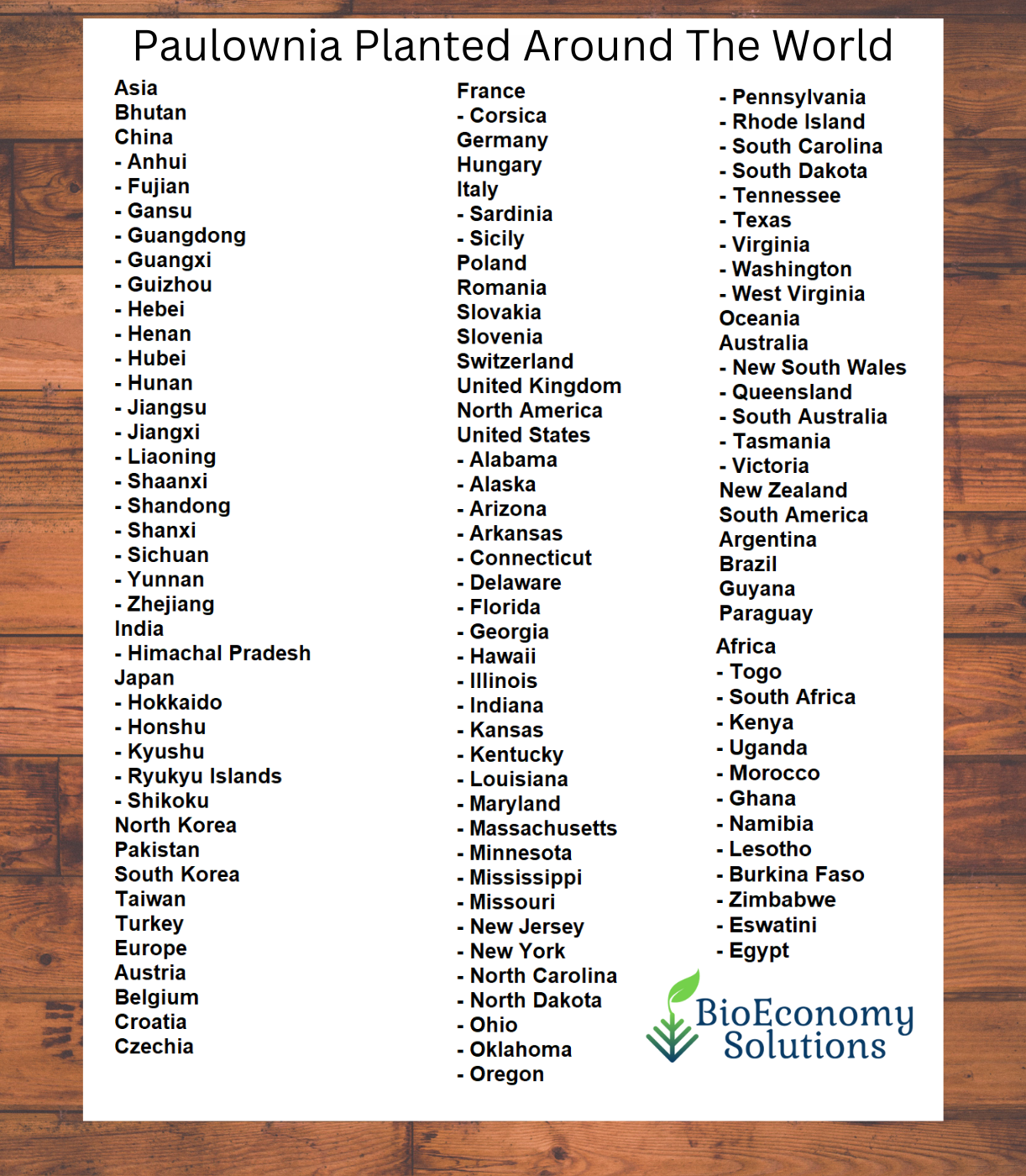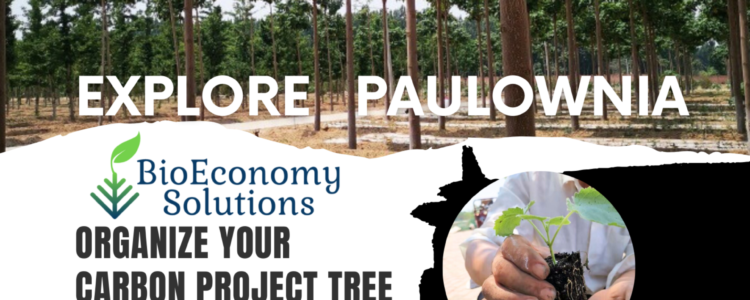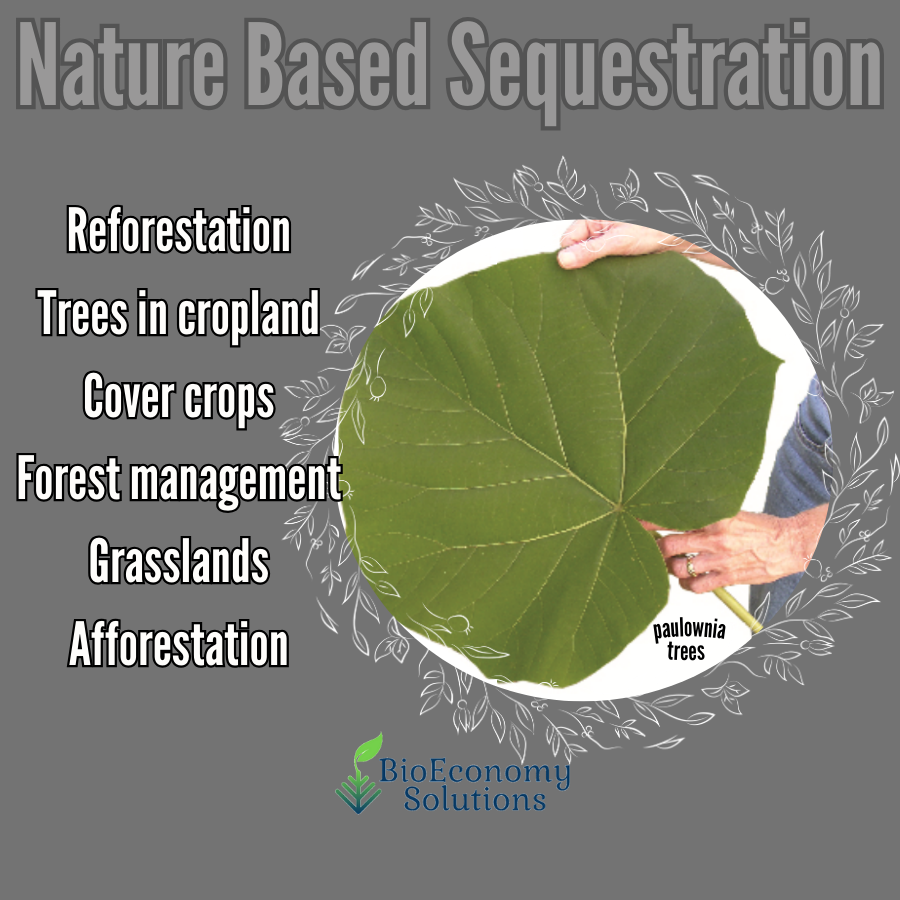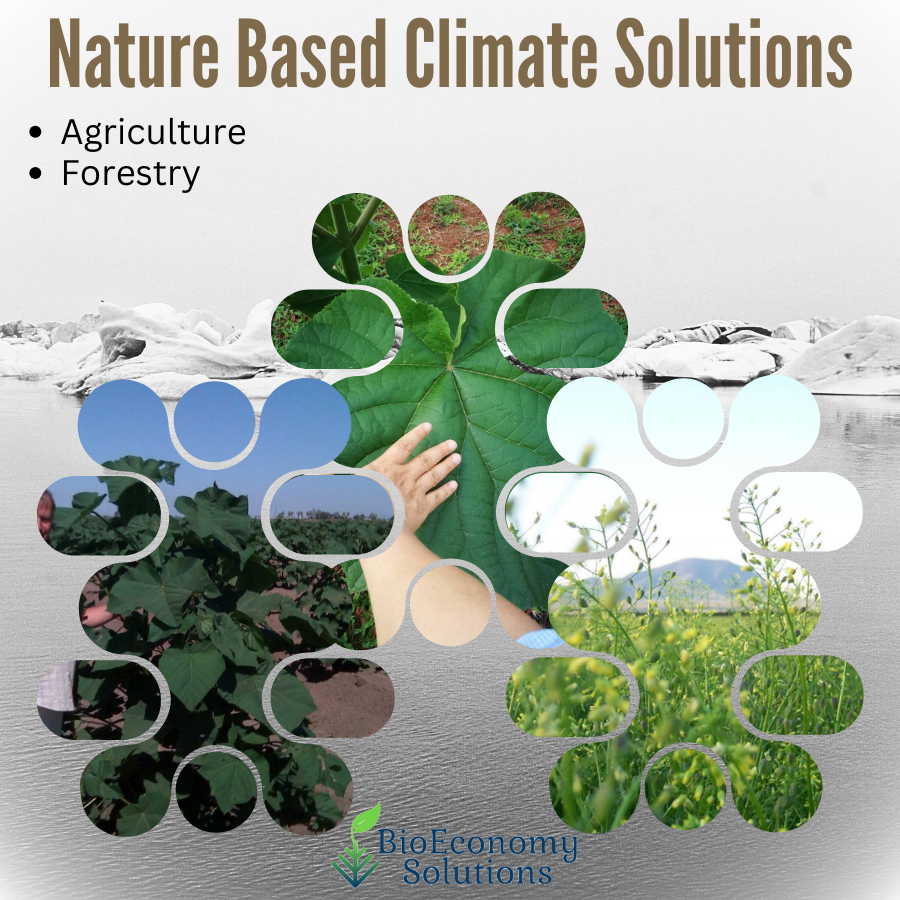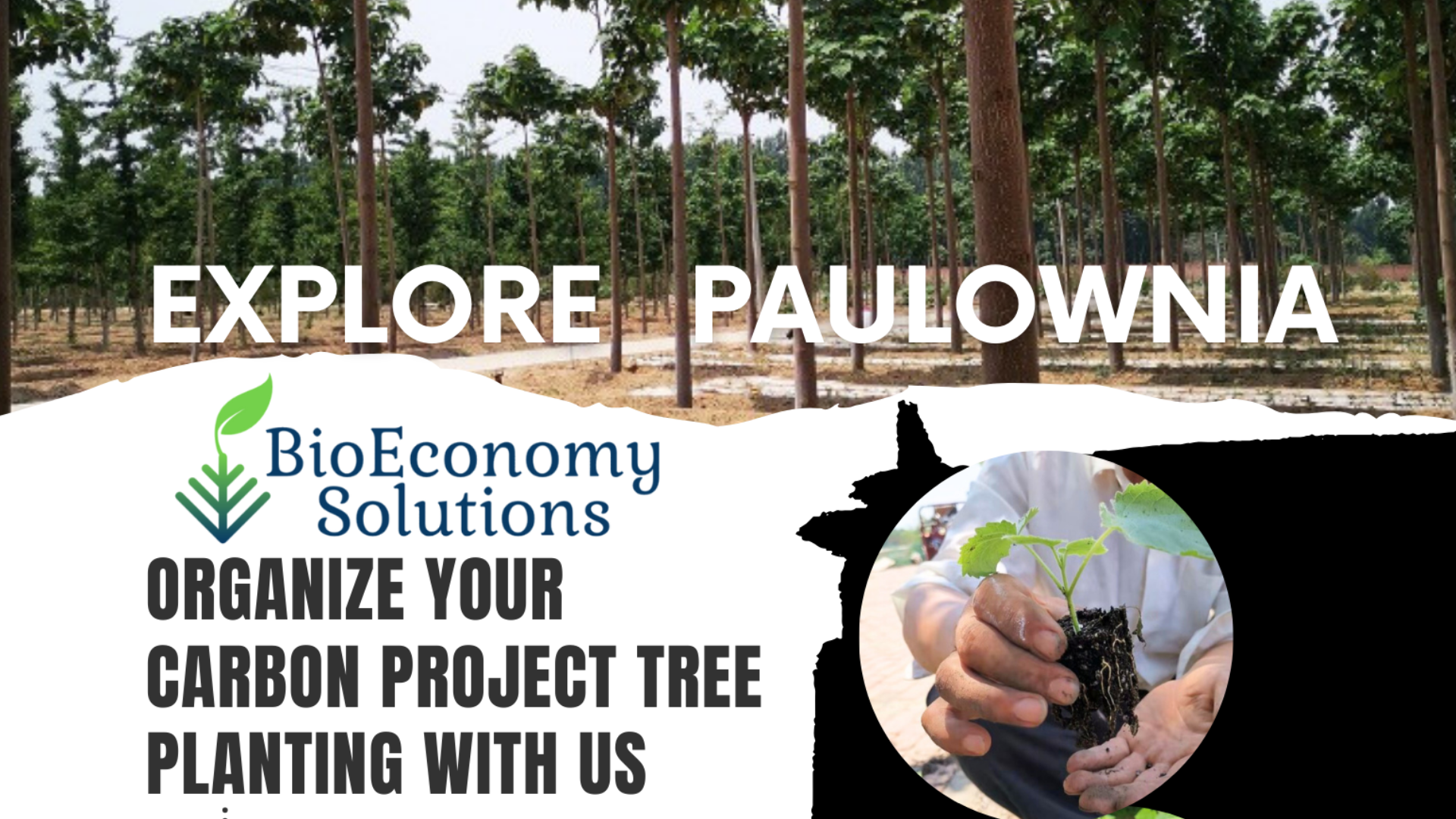Paulownia Tree Green Tech Carbon Climate & Economic Solution
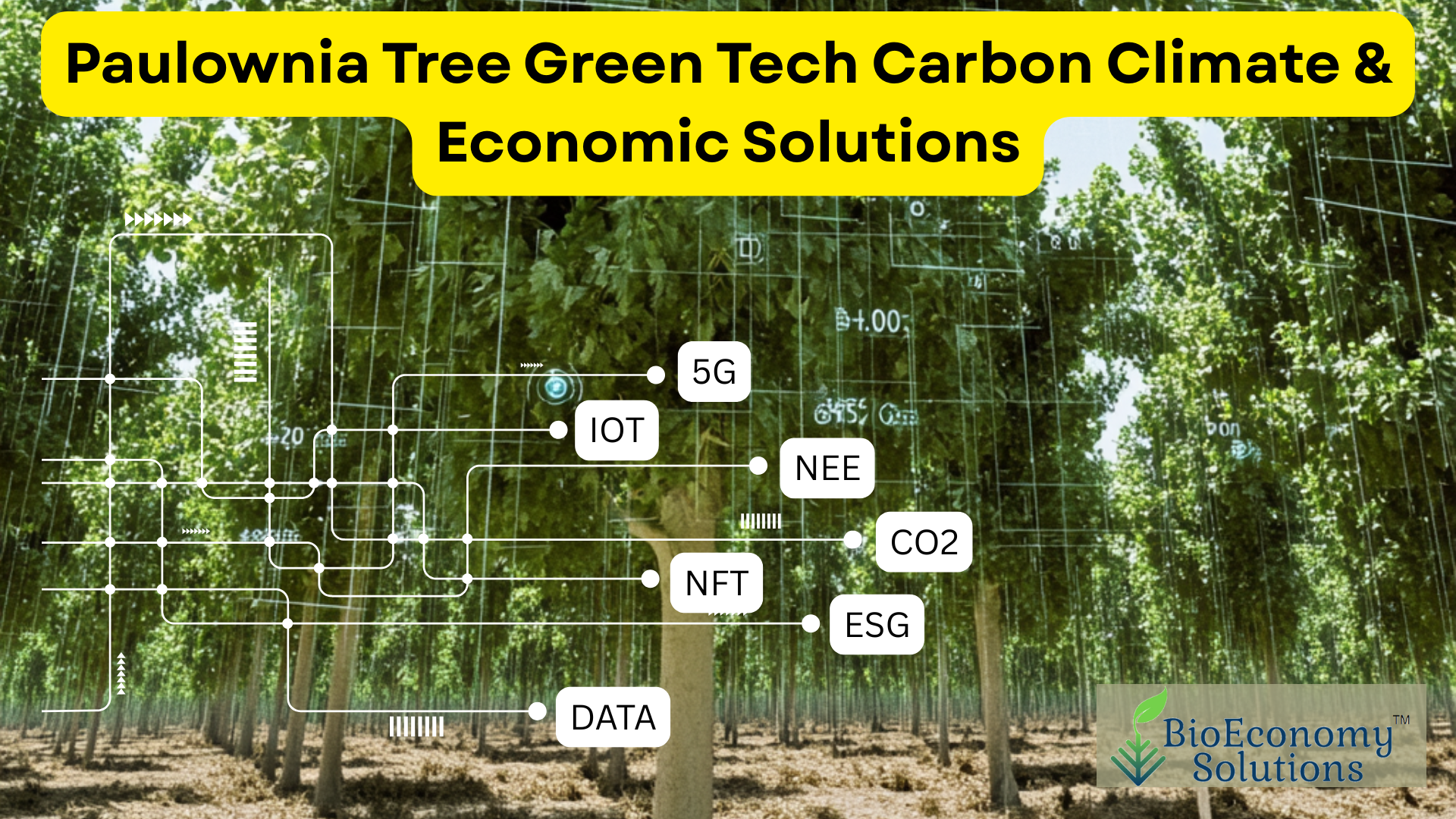
As regulatory frameworks tighten and stakeholder pressure grows, corporations face escalating demands to deliver transparent, measurable, and sustainable carbon removal solutions. Traditional carbon offsets are under scrutiny for lack of additionality, poor verification, and greenwashing risks. To meet ESG compliance mandates, businesses must adopt high-efficiency Carbon Dioxide Removal (CDR) strategies with real-time auditability—enter Paulownia-based reforestation, enhanced by IoT and blockchain tokenization.
Incase you missed it….? Here is our REPLAY of our live event on this subject. CLICK HERE
Why Paulownia? The ESG-Compliant Carbon Removal Powerhouse
Paulownia, often called the “Empress Tree,” is renowned for its rapid growth, reaching maturity in just 5-7 years compared to decades for traditional hardwoods. Its enormous leaves and high photosynthetic efficiency allow it to absorb up to 103 tons of CO₂ per hectare per year, far surpassing most other tree species.
Key Benefits of Paulownia for CDR:
✔ Extreme CO₂ Absorption– 10x more efficient than typical trees.
✔ Fast Growth– Matures in 5-7 years, enabling quicker carbon capture cycles.
✔ High Biomass Production– Ideal for bioenergy and sustainable timber.
✔ Drought & Disease Resistant– Thrives in diverse climates.
✔ Soil Regeneration – Improves degraded land through deep root systems.
✔ No Replanting – Post harvest, the tree regrows from the stumpage.
Paulownia’s unmatched CO₂ sequestration (10x more than average trees) and rapid growth make it ideal for high-impact ESG portfolios. But scalability alone isn’t enough—verifiability is key. By integrating IoT sensors and blockchain-tracked carbon data, corporations can transform Paulownia plantations into digitally verified carbon sinks, ensuring:
✔ Real-Time Monitoring– IoT devices track CO₂ absorption, soil health, and tree growth.
✔ Immutable Carbon Ledger– Blockchain records every ton of CO₂ removed, preventing double-counting.
✔ Automated ESG Reporting– Smart contracts generate auditable reports for SEC, EU CSRD, and voluntary disclosures.
✔ Tokenized Carbon Credits – Carbon removal verified on-chain, tradable as NFTs or security tokens in compliance with financial regulations.
Corporate Use Case: Tokenized Paulownia Carbon Projects
- A Fortune 500 company invests in a Paulownia reforestation project.
- IoT sensors transmit growth and CO₂ data to a DeFi-enabled carbon registry.
- Each ton of CO₂ removed is minted as a tokenized carbon credit (e.g., ERC-1155 or ERC-3643 for compliance).
- Smart contracts auto-settle carbon credit sales, with proceeds funding further CDR expansion.
Blockchain + IoT: The Future of ESG-Compliant Carbon Markets
Current carbon markets suffer from fragmented registries, opaque pricing, and verification delays. Tokenizing Paulownia’s CDR impact solves this by:
- Enabling Liquid Carbon Markets – Corporations trade tokenized credits on regulated digital asset exchanges.
- Ensuring Auditability – Every credit is backed by IoT-verified sequestration data stored on-chain.
- Meeting CSRD & SEC Climate Rules – Real-time reporting aligns with EU’s Corporate Sustainability Reporting Directive (CSRD) and SEC climate disclosure mandates.
Monetizing Carbon Removal: From Compliance to Revenue
No longer is your ESG program a loss leader, It’s now a profit center to be recognized by CFOs and sustainability officers.
Paulownia-based CDR isn’t just a compliance cost—it’s a new revenue stream:
💰 Carbon Credit Sales– Tokenized offsets sold to net-zero buyers.
💰 Sustainable Timber & Biomass– Additional income from certified wood products.
💰 Biomass Energy – Fast-renewable feedstock for clean energy.
💰 ESG-Linked Financing – Lower borrowing costs via sustainability-linked bonds (SLBs) tied to verifiable CDR.
💰 Critical Mineral Production – Fast-renewable feedstock for biochar, graphite & graphene.
The Path Forward: Scaling Paulownia CDR with Corporate Adoption
To meet net-zero pledges, leading firms must:
✅ Partner with AgriTech providers to deploy IoT-monitored Paulownia plantations.
✅ Integrate blockchain carbon ledgersinto ESG accounting systems.
✅ Lobby for standardized tokenized carbon policies to ensure regulatory acceptance.
Carbon Is Now a Digitally Native Asset
Paulownia’s biological efficiency, combined with blockchain transparency and IoT precision, creates a new class of ESG-compliant carbon removal. Corporations that adopt this model will not only meet compliance—they’ll lead the next generation of high-integrity carbon markets.
The future of CDR is verifiable, tradable, and profitable. Are you ready to tokenize your carbon strategy?
WHAT IS NEXT?
Next Steps for Corporations:
🔗 Contact BioEconomy Solutionsfor ESG IoT-enabled Paulownia CDR projects.
🔗 Explore EDMA carbon tokenization platformto digitize offsets.
🔗 Align with TCFD, CSRD, and SEC reporting frameworks using blockchain-audited data.
ABOUT BIOECONOMY SOLUTIONS
About BioEconomy SolutionsWe Develop Eco-Friendly Agricultural Crops For Energy, Timber & Food. 🌲#trees 💱 #carbonmining
Contact Us

FREE Guide – “Carbon Credits & Paulownia Trees”

